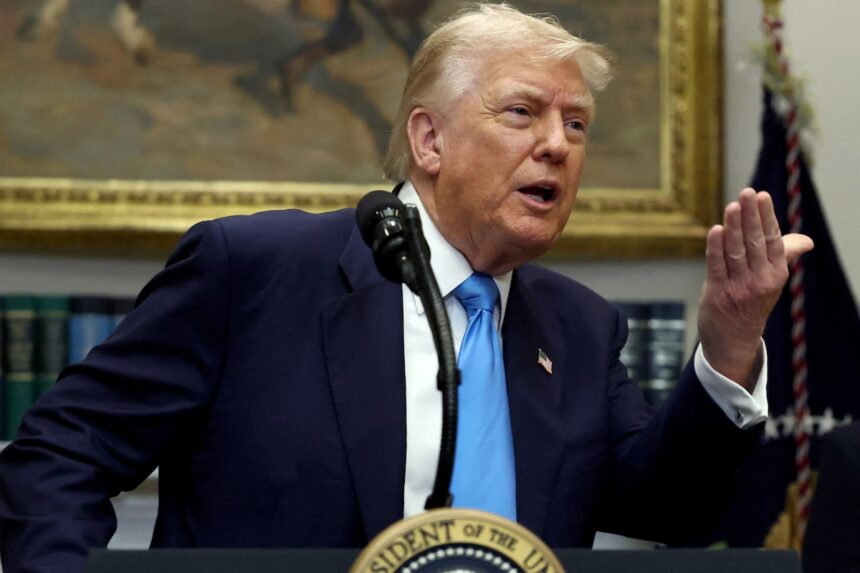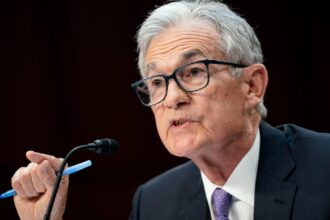The shadow of potential tariffs on Canadian exports looms large over the country’s economic landscape, just as the Bank of Canada maintains its cautious stance on interest rates. In what analysts are calling a “double economic pressure point,” Canada now navigates both domestic monetary policy challenges and the threat of renewed trade tensions with its largest trading partner.
Former U.S. President Donald Trump’s recent campaign pledge to implement sweeping tariffs on all Canadian goods has sent ripples through business communities nationwide. “We’re looking at a potential 10-20% tariff scenario if Trump returns to office,” explains Thomas Richardson, chief economist at Vancouver Trade Associates. “For industries like automotive, lumber, and energy—this represents billions in potential impact.”
The timing couldn’t be more complex as the Bank of Canada held its key interest rate at 4.75% this week, balancing inflation concerns against signs of economic cooling. Governor Tiff Macklem emphasized the delicate balancing act in his press statement: “While inflation has moderated to 2.8%, we remain vigilant about potential external shocks that could derail our progress.”
Canadian businesses are already formulating contingency plans. Telus Corporation announced yesterday it’s revising its cross-border supply chain strategy, accelerating domestic procurement where possible. CEO Darren Entwistle noted during the company’s earnings call that “geopolitical uncertainty requires proactive resilience planning.”
The potential tariffs represent more than just economic friction—they signal a possible fundamental shift in the Canada-U.S. trade relationship that has flourished under CUSMA (formerly NAFTA). With nearly 75% of Canadian exports destined for American markets, representing approximately $400 billion in annual trade, the stakes couldn’t be higher.
Border provinces like Ontario stand to feel the greatest impact. Manufacturing centers from Windsor to Hamilton could face significant disruption if automotive parts face new barriers. “We’re talking about integrated supply chains that have evolved over decades,” notes Michelle Carter of the Canadian Manufacturers Association. “You can’t simply unwind that complexity overnight without substantial costs on both sides.”
The federal government has initiated preliminary discussions with provincial leaders and industry representatives to develop response strategies. Sources within Global Affairs Canada indicate diplomatic channels remain open, though preparations for potential trade countermeasures are underway.
For everyday Canadians, these developments could translate to higher consumer prices and potential job instability in export-dependent sectors. Analysts at Royal Bank project that sustained tariffs could add 0.5-1.0 percentage points to inflation, complicating the Bank of Canada’s efforts to maintain price stability.
Energy markets appear particularly vulnerable. With Canadian oil and natural gas constituting approximately 19% of U.S. energy imports, any disruption threatens energy security on both sides of the border. Industry leaders from Alberta’s energy sector have begun lobbying efforts in both Ottawa and Washington to highlight the mutual economic damage tariffs would inflict.
The Bank of Canada’s cautious approach to rate adjustments now takes on additional significance. “Holding rates steady provides some stability amidst external uncertainty,” explains financial analyst Priya Sharma of CO24 Business. “But it also limits the Bank’s flexibility if rapid response becomes necessary.”
As Canadian businesses and policymakers navigate these choppy waters, one thing remains clear: the coming months will test the resilience of Canada’s trade relationships and economic fundamentals. With provincial elections approaching in some regions and federal policy decisions on the horizon, how Canada positions itself between economic pragmatism and political principle may define its economic trajectory for years to come.
Will Canada’s diversification efforts toward Asian and European markets accelerate in response? Or will pragmatic accommodation with its largest trading partner prevail? These questions now sit at the heart of Canada’s economic strategy as both nations head toward a potentially transformative period in their trading relationship.






















